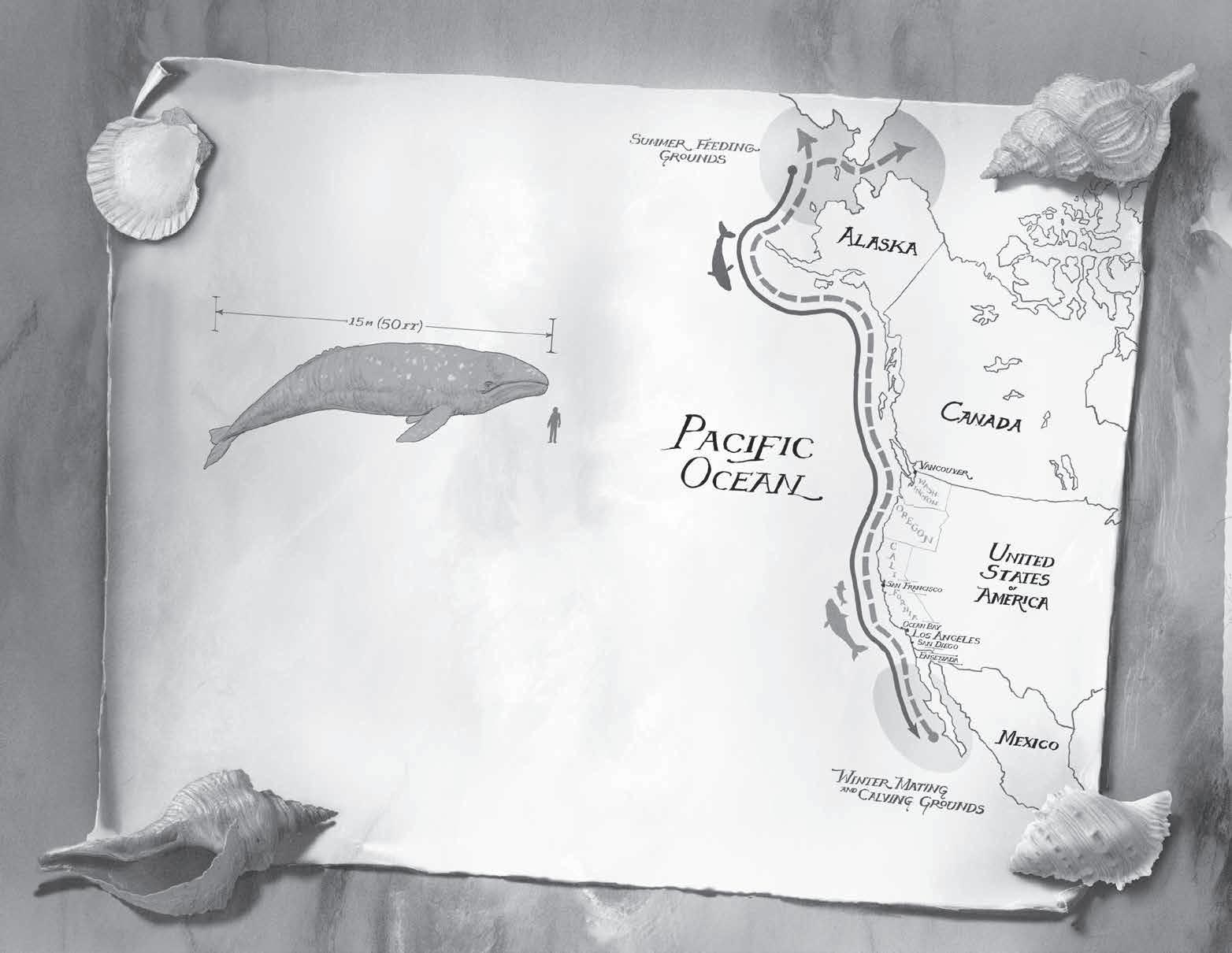













































Activity: Test your knowledge of the story. See how many quiz questions you can answer correctly. Use the book to help you find the answers.

Pupils should be taught to:
Maintain positive attitudes to reading and understanding of what they read by:

• Checking that the text makes sense to them, discussing their understanding and explaining the meaning of words in context
• Asking questions to improve their understanding
• Summarising the main ideas drawn from more than one paragraph, identifying key details that support the main ideas
1. What’s the name of the small coastal town in California, where Rio goes to stay with his grandmother?
Your answers
2. Rio’s mum is a professional musician. What instrument does she play?
3. What does Marina state is ‘the second rule of whale watching’?

4. Grey Whales are believed to make the longest annual migration of any mammals on Earth. What distance do they cover (in miles or km)?
5. Grey Whales are known by various different names. Can you name two of these?
6. What is the name of Rio’s grandmother’s cat?
7. Marina already knows Rio’s grandmother, Fran. How do they know each other?
8. Rio uses an online database to try and track sightings of White Beak. What is the name of this database?
9. White Beak is found caught in blue steel rope. What does Marina call this?
10. What other animals do the Marine Rescue Team often have to free from these nets?
11. What are Rio’s mum’s favourite biscuits?
12. Grey Whales feed in the cold waters of Alaska. What do they feed on?

‘In real life, the whale was so big, so vast, so awe-inspiring that Rio bit his tongue – the hot, metallic taste of blood filling his mouth. Her head alone was probably three times the size of Rio, made up of one huge upper and lower jaw. The skin was a dark slate colour with patches of lighter grey and white covering her nose…’
‘…The whale’s head was probably out of the water mere seconds, but it was as if time had stopped, and in that way Rio managed to drink in every last detail. The crinkly outline round her one visible eye, how the barnacles stuck to her snout in coarse, uneven clumps, the white meshy stuff in her mouth that Marina had said was called baleen.’


(Pages 143-144)
Activity: Research and create a fact file about Grey Whales.
You can use information from the story as well as research from the Internet to find out about Grey Whales. Use the information you discover to create a fact file that could be used to teach others about Grey Whales.
Ideas to include:
• What is a Grey Whale?
• Where do Grey Whales live?
• What do Grey Whales eat?
• What threatens Grey Whales?
• Describe the Grey Whales’ migration journey
• How are Grey Whales similar or different to other whales?
• How can we help Grey Whales?
• What can we do to help protect our oceans and sea life?
KS2 English NC links
Pupils should be taught to:

Maintain positive attitudes to reading and understanding of what they read by:

• Checking that the text makes sense to them, discussing their understanding and explaining the meaning of words in context
• Asking questions to improve their understanding




During their migration, grey whales travel an average of roughly 75 miles (120 km) per day at an average speed of 5 miles per hour (8 kph).
They feed in the cold Arctic waters and calve and mate in the warm, protected tropical lagoons of the Pacific Ocean off Mexico.

In total, this round-trip covers a distance of roughly 12,000 miles (20,000 km) and is believed to be the longest annual migration of any mammal on Earth.
